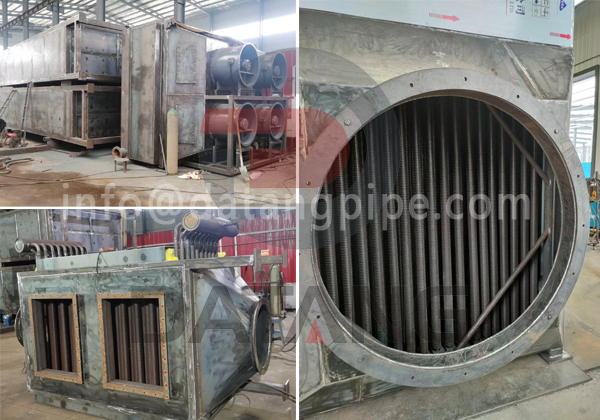- Heat Exchanger Type: Finned tube heat exchanger(Tube Fin Heat Exchanger,Finned Coil Heat Exchanger,finned tube exchanger)
- Tube Material: Carbon steel, stainless steel, copper, aluminum
- Product description:
The finned tube heat exchanger belongs to one of the enhanced heat transfer heat exchangers.
- Leave Your Message
The basic heat transfer element of the finned tube heat exchanger is a finned tube, which is composed of a finned tube and a base tube and a fin. The base tube is usually a round tube, but there are also oval tubes and flat tubes.
The finned tube heat exchanger belongs to one of the enhanced heat transfer heat exchangers. The heat transfer on the air side is improved by means of the tube wall fins, which is an extremely economical choice compared to the place where the air is heated by steam and heat transfer oil.
The structure of the finned tube heat exchanger is basically the same as that of the general shell and tube heat exchanger, except that the finned tube is used instead of the light tube as the heat transfer surface. This makes its structure more compact, the heat exchange area increases, and the heat exchange can be enhanced.
Fin-tube heat exchangers are widely used in power, chemical, petrochemical, air conditioning engineering and refrigeration engineering, such as surface air coolers, air heaters, and fan coil units used in air conditioning engineering. Cooler evaporators and frost-free refrigerator evaporators used in refrigeration engineering are not only suitable for the flow of single-phase fluids, but also have great value for phase change heat.
Notice:
Although the air velocity seriously affects the thermal conductivity and air resistance of the finned tube heat exchanger, the most important thing is the air mass flow velocity. It is because the air mass flow velocity is the key factor that really interferes with the thermal conductivity and air resistance of the finned tube heat exchanger. It is related to the diameter of the fins, the distance between the fins, the thickness of the fins, the outer diameter of the fins and the distance between the tubes of the finned tubes. Its arrangement and combination form the ratio of the narrow-gap flow surface to the windward surface. Air mass flow velocity is the ratio of air velocity/narrow flow surface to windward surface. Therefore, after knowing the windward area of the finned tube heat exchanger, in order to obtain a more reasonable thermal conductivity, or to adjust the resistance on the air side, which is also the pressure loss on the air side, it can be adjusted by adjusting the arrangement of the finned tubes.




